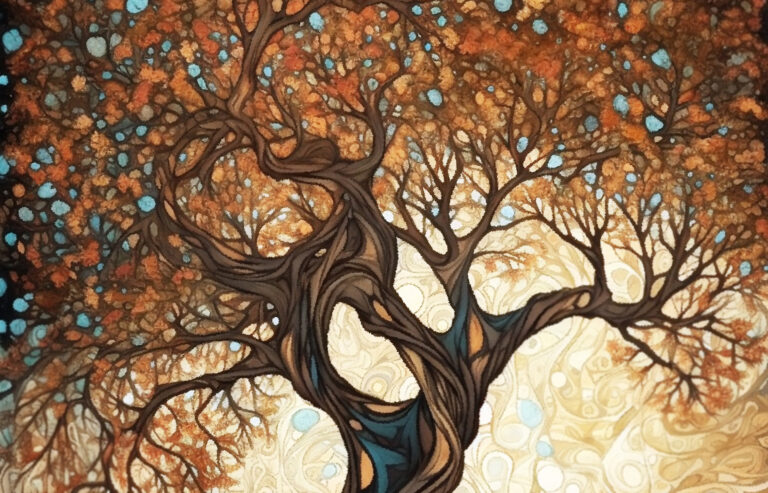Creative and Contemplative Practice
"The first great virtue of someone seeking the spiritual path is courage."
– The Valkyries
Struggling with creative and spiritual issues is more common than one might expect and these issues do in fact demand courage as well as our ability to be vulnerable. Entering into Jungian analysis or psychotherapy is often described as a creative and spiritual process—an experience of working with the transpersonal, which is the life that exists beyond us as well as deep within us. The work is sacred and deeply personal as the greatest information comes to us from the unconscious; the challenge for us becomes how to listen and attend to its messages without dismissal.
Creativity
“The artist’s relative lack of adaptation turns out to his advantage; it enables him to follow his own yearnings far from the beaten path, and to discover what it is that would meet the unconscious needs of his age……art represents a process of self-regulation in the life of nations and epochs” –Jung (CW 15, 131).
Jung was keenly interested in the healing process of creativity for himself but also for his patients and how it manifests within the collective. He was also interested in the healing process by which symbols become known to us or to the culture; this led him to his ideas around the transcendent function, an energy-driven process of internal opposites that come together to form a metaphorical sausage maker that results in a new symbol, like a sausage!
Jung was keenly interested in the healing process of creativity for himself but also for his patients and how it manifests within the collective. He was also interested in the healing process by which symbols become known to us or to the culture; this led him to his ideas around the transcendent function, an energy-driven process of internal opposites that come together to form a metaphorical sausage maker that results in a new symbol, like a sausage!
The shuttling to and fro of arguments and affects represents the transcendent function of opposites…The confrontation of the two positions generates a tension charged with energy and creates a living, third thing…The transcendent function manifest itself as a quality of conjoined opposites. -Jung (CW8).
As our culture becomes increasingly more frenetic, demanding our time and psychic energy, we tend to have less time to give to the symbolic process expressed by the needs of our soul where there resides a pulsing creative and spiritual longing. Our soul is what stirs our imagination and without connection we may experience a great loss of connection to the creative mystery of life and what holds meaning for us as individuals. Analysis can offer the unique quiet time and space to access our imagination, to engage in a creative and relational process that may be awakened by dreams, journaling, art, movies, poetry, followed by the possibilities of what we make manifest through our visual journals.
Some artists arrive with disappointments, blocks and challenges that require the expansion and loosening of current views on life. Sometimes there is a necessary symbolic death occurring in the psyche after a large project has been completed; a vigil to the old through mourning must occur before a new process can emerge.
Creative work can be a lonely long process, but Jungian analysis both follows and investigates the natural unfolding of the creative instinct alongside the death instinct, opening new windows into our personality and our life. As Jung said about a creative life: “[it] always stands outside convention” (CW 17, 305), which places an individual in the position of being in exile, living slighting on the edge of one’s community.
Spirituality
“Too few people have experienced the divine image as the innermost possession of their own souls” –Jung (CW 12, 12).
Jung was one of the first recognized psychoanalysts to give psychological value to the religious nature of the psyche, which is why Jungian psychology is often referred to as depth psychology. Jung’s concept of the transpersonal was described by the Self, the religious aspect of the psyche that is both deep within us and all around us. Keeping one eye on the daily life, or chronos time, Jungian work simultaneously explores the archetypal depths through myth, fairy tales, symbols and other images emerging spontaneously from our sand tray, dreams or art, all of which exist in kairos time.
Jung’s ideas on the Self and transpersonal psychology emerged partially from his own childhood experiences, partially from an interest in Henry James work on psychology and the transpersonal aspect of the psyche, and his personal exploration and conceptualization of the structure of the psyche, which he often called the objective psyche or the Self. These fundamental precepts became known to Jung as an autonomous force within his own psyche through his painted images and active imaginations. Jung’s personal experience of inner work is often referred to as a creative confrontation with the unconscious; his personal process is documented in the Red Book. During this time of tremendously challenging inner work, he was also very productive in the outer world where he continued to teach, travel, write, and see patients.
The Red Book and NPR’s Story on the Red Book
Living through the wars, Jung saw directly how the loss of relationship to the gods is “the prime evil of neurosis” (CW 10, 367), leaving individuals and the collective floundering, surrounded by destruction, one-sidedness, and an internal emptiness with feelings of being orphaned and exiled. To Jung, the symbols, that reflect the multitude of archetypes throughout our daily life without us even paying attention, offer purpose in our life, connecting us to the meaning within our human existence. When our ego is cut off from the Self, we suffer tremendously, sometimes without even realizing what has happened. Awakening this relationship between the ego and the Self can be revived through such practices as active imagination, meditation, contemplation, prayer, hiking, sacred song, dance, or artmaking.

